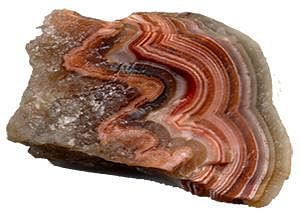Test: General Physical Geograph- 2 - Class 8 MCQ
10 Questions MCQ Test - Test: General Physical Geograph- 2
Which of the following is a function of the geosphere?
Sharks are killers of the deep seas. Which of the following is a characteristic of sharks?
| 1 Crore+ students have signed up on EduRev. Have you? Download the App |
Look at the given picture. Which of the following best classifies the type of rock shown in the picture?


To which one of the following types of vegetation does rubber belong to?
'X' is a vent in Earths surface that periodically ejects a column of hot water and steam. The formation of it is a rare phenomenon because it is due to particular hydrogeological conditions which exist at few places on Earth. Taupo volcanic zone in New Zealand is one of its examples. Identify 'X'.
You are to examine these two statements carefully and select the answers to these items:
Statement I: Minerals are formed by slow cooling of the magma.
Statement II: Very small crystals are formed when lava cools quickly on the surface.
Which one of the following gases is found in highest quantity in Exosphere?
Which one of the following describes the Lithosphere?
You are to examine these two statements carefully and select the answers to these items:
Statement I: Chemical weathering processes are found more active in hot and humid environment.
Statement II: High temperature and rainfall help in the process of decomposition of rocks.

















